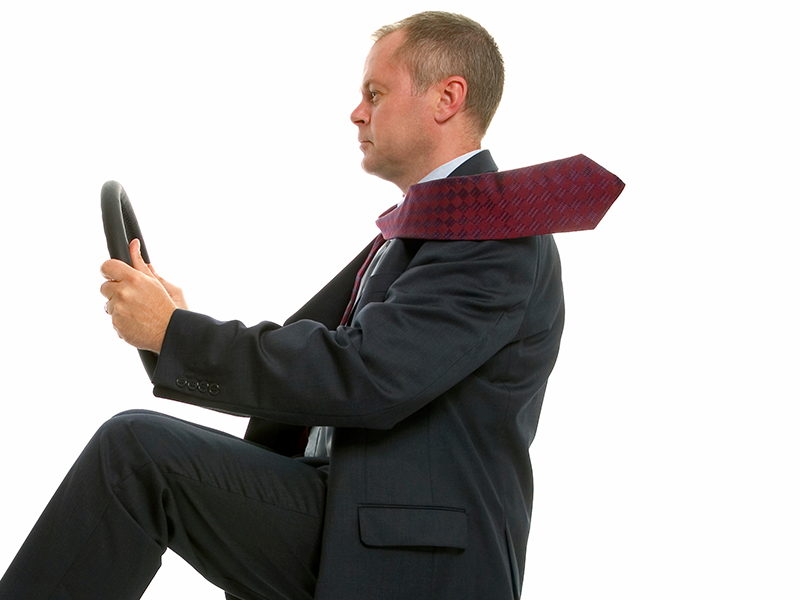Have you thought about how much you drive? There’s the day-to-day just getting to and from work, weekend excursions, family vacations and day trips. It adds up to lots of time in the car. Our bodies are designed to move, so being stuck in one position for several hours can cause strain that our bodies aren’t ready for. There are also strains associated with the physical act of driving. Those strains increase with higher speeds and more aggressive cornering, but the principles apply to everyone.
The next time you’re behind the wheel, remember these seven pointers on safety and comfort.
• Set your seat up properly. When sitting all the way back in the seat, if you extend your arm forward over the steering wheel, the steering wheel should hit at your wrist. If you’re too close, your air bag won’t be able to deploy properly, but if you’re too far away, you won’t have as much driving control, and you’ll put excess strain on your shoulders and neck.
• Brake and shift comfortably. You should be able to fully brake and fully depress the clutch and still have a little bit of bend in your knee. You may need to adjust the seat angle to get both your arms and legs in the correct position for your car.
• Lumbar support. Now that you’re in the correct position, see if your low back is well supported, or if your seat puts you in a slightly slumped position. If you’re slumped, there will be a lot of strain on your low back. Many cars have adjustable lumbar supports, and most people can benefit from using that feature. If you don’t have adjustable lumbar support, though, you can still improvise. There are lumbar rolls that serve the same purpose that attach with an elastic strap around the seat—the half-round ones are perfect for use in cars! They fill in that little gap in the small of your back. In a pinch, you can roll up a towel and use that, but the springiness of the foam of a lumbar roll is really nice.
• Stability. Most seats and seatbelts don’t provide much in the way of support side to side. Sports cars tend to have somewhat better support along the sides of the seatback and sometimes along the seat bottom, but there’s still a lot of opportunity for sliding around. That forces us to use a lot more muscle contro and can lead to driving fatigue. This tendency is exaggerated when zipping around curves in a spirited fashion. If you’re lucky enough to have adjustable side bolsters in your seat back, take advantage of them. If you want to get some extra stability but aren’t interested in a full racing seat and harness, a nice product to try is a CG Lock (cg-lock.com).This device attaches to your existing seatbelt, but locks the lap belt portion to keep your hips from shifting around.
• Hand position. Years ago, we were taught to drive with our hands at the 10:00 and 2:00 positions on the steering wheel, and to cross our arms when going around turns. Now that air bags are in all vehicles, the safest position is with the hands on the lower half of the steering wheel. For performance driving, the hands can be a little higher, and the best control is right at the cross spokes of the steering wheel. Even in performance driving, however, you still don’t want to let your arms cross as you turn, because you can be seriously injured if the air bag deploys with your arms in front of it.
• Your vehicle. Once your body is in a good position, pay a little bit of attention to your vehicle itself. Worn suspension parts can transmit a lot of vibration through to the passengers, and our bodies aren’t suited to resist vibrational forces. Is your car pulling one way or the other? If so, an alignment will help decrease stress on your shoulders.
• Take breaks! Don’t forget this simple thing. A quick stop can be a great chance to do some stretches and walk around a bit before you get going.

